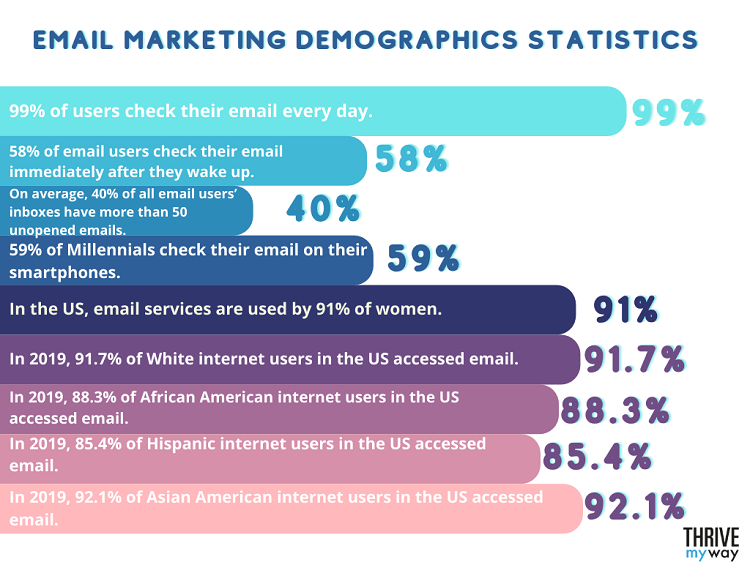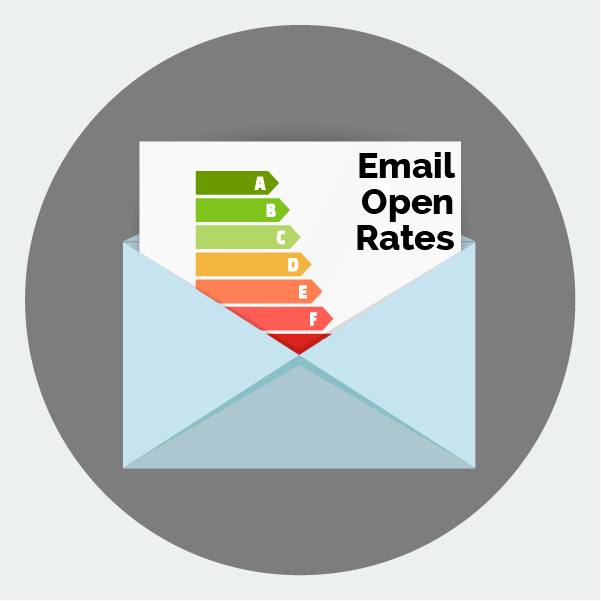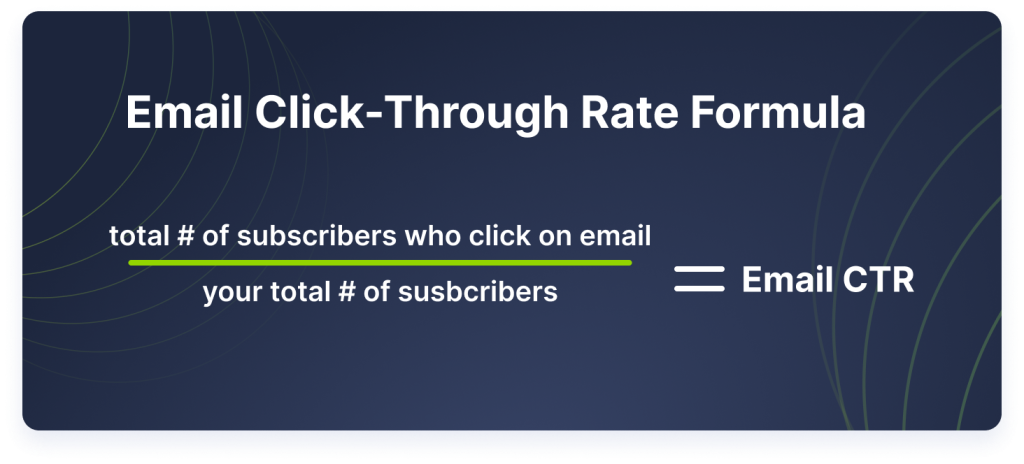Table of Contents
Email marketing metrics are indicators that help in the evaluation of the success of email campaigns. There are two categories to consider: the first is basic engagement metrics, and the second is conversion-related indicators.
It can take some time to learn email marketing. It requires applying best practices to each campaign you create, avoiding common rookie mistakes, and optimizing emails to increase interaction.
These analytics, like the rest of email marketing, are dynamic. Every email marketing campaign is different, especially if you have different goals for each one (such as building your subscriber base and generating leads), but there are many basic metrics that every email marketer should learn how to track.
Key Statistics:
- Email marketing revenue is estimated to reach almost 11 billion by the end of 2023. (Statista, 2021)
- 50% of people buy from marketing emails at least once per month. (Salecycle, 2022)
- 81% of B2B marketers say their most used form of content marketing is email newsletters. (Content Marketing Institute, 2020)

An email service provider will begin collecting performance data almost immediately after implementation. After 72 hours, the statistics will begin to decline because the bulk of receivers will have been engaged or ignored.
Email is a very adaptable marketing channel that, when used wisely, can be extremely effective. Tailoring messages to buyer personas is simple, especially when email analytics are accurately interpreted. Metrics provide vital information about current campaigns and may point to solutions to existing problems.
Examine the metrics listed below. This is a list of the most important criteria to consider when assessing an email campaign.
PROS is an internet marketing and web development company that has been in business since 1996. We have successfully executed over 10000 marketing campaigns. Our in-house email marketing experts are professionals in creating a seamless and data-driven email campaign.
1. Open rate

The open rate has long been one of the most basic and widely used KPIs by email marketers. By tracking the percentage of subscribers who open a specific email, we can determine how engaged our subscribers are and how effective certain subject lines are.
When Apple makes Mail Privacy Protection available to the general public, the functionality will effectively preclude open-tracking for those who choose to use it, making the open rate a relatively unreliable indication. When other inbox service providers follow suit, the open rate will become much more volatile.
2. Click-through rate (CTR)

CTR is another useful metric for evaluating the success of your marketing efforts. CTR measures how many people click on the links in your email. For example, if you added a link to redeem an offer, the CTR would determine how many subscribers clicked on it.
There are a few strategies for increasing click-through rates in emails. Insert links in appropriate places throughout the email, for example, and include a noticeable call-to-action button that subscribers may click to take advantage of your offer.
Open rates are frequently significantly greater than click-through rates. Most campaigns have a click-through rate of slightly more than 2%.
3. Conversion rate

The number of people that clicked on your link is counted as your click-through rate, but the number of people who clicked on the link and then did a certain action is counted as your conversion rate. The conversion rate would show how many people clicked on a link to participate in a Black Friday sale, for example, if you included a link in your email urging subscribers to do so.
Conversion rates provide unique insight into your return on investment. When you know how much you’ve spent and how many subscribers are converting, determining whether or not the money you’re investing in your campaign is easier.
4. Bounce rate
When sending an email campaign, you should maintain track of the bounce rate. The bounce rate determines how many subscriber email addresses did not get your email. Hard bounces indicate permanent problems with email addresses, whereas soft bounces indicate ephemeral problems.
By comparing bounce rates to open rates, you can better analyze the quality of your subscriber lists. If you have a lot of hard bounces, your list may contain a lot of fraudulent email addresses, obsolete email addresses, or poorly entered email addresses.
You can reduce bounce rates by adopting a double opt-in process that requires users to confirm both their email addresses and their intent to receive emails from your company. Requiring double opt-in is an excellent technique to ensure higher quality email lists and lower bounce rates.
5. Number of unsubscribes
It is rather simple to calculate the unsubscribe rate. Any email service will tell you how many users unsubscribed after receiving one of your emails. This email metric is typically seen on your main dashboard or metrics dashboard.
Large numbers of unsubscribers might be discouraging. Email marketers, on the other hand, place a great value on this metric and frequently regard unsubscribes as positive indications because they indicate that your subscriber list is being refined.
Furthermore, offering subscribers the opportunity to unsubscribe demonstrates that they have control over the type of content they receive from your firm and when they receive it, which fosters confidence.
6. List growth rate

The list growth rate is the statistic to use to track the rate of growth of your list.
To calculate this, divide the total number of email addresses on your list by the number of new subscribers minus the number of unsubscribes, then multiply the result by 100.
As attrition is unavoidable, concentrate on strategies to grow your list, communicate with subscribers, and acquire new, dedicated subscribers.
7. Spam complaints
Receiving a spam report for one of your emails can be devastating. Even if you want to ignore these occurrences, spam concerns must be addressed.
Spam complaints are being monitored by email service providers in order to preserve quality. If this rate becomes too high, your email service provider may take action against you and block your account.
Your email service provider will most likely track this statistic for you, but you may want to keep an eye on it yourself to ensure that your emails are error-free and that your copywriting adheres to your intended standards. Avoiding spam filters is critical for increasing the number of opens, clicks, and conversions generated by your email marketing.
8. Forwarding rate/email sharing

The forwarding rate is the percentage of recipients who forwarded your email to a friend or posted it on social media.
Monitoring the forwarding or sharing rate might give you an idea of how many brand advocates you have. It indicates the percentage of subscribers that forward your emails to others.
Creating brand champions through email marketing is a wise idea, especially given that social media posts from friends have an 81% influence on client purchasing behavior.
9. Engagement over time
Monitoring interaction over time might help you determine when to send messages at the best times of the day. Your email service provider may enable automation so that you can send emails in reaction to client behavior or other triggers, but tracking interaction over time will reveal when non-automated emails achieve the highest click-through rates.
Some email hosting services automate and compile this function for you. However, it is not a bad idea to monitor this indicator independently and find the best send times for your industry and subscriber base.
10. Overall ROI
Every marketer that uses email should keep track of total ROI. It gives you information on the entire return on investment of your efforts.
This can be computed by deducting the cost of operating the campaign from the revenue earned, multiplying the result by the amount invested in the campaign, and finally multiplying the result by 100. Email marketing offers the highest return on investment of any digital marketing strategy (ROI).
11. Email sharing rate
The email sharing rate has nothing to do with email delivery and instead indicates how frequently a recipient shared your email on social media.
This metric is determined by the “share this” button on your email. To calculate this rate, divide the number of “share this” clicks by the total number of emails delivered, then multiply the result by 100.
Using this information, you can also generate some useful email benchmarks.
12. Mobile open rate
The main distinction between this metric and the normal open rate is that it only applies to mobile devices like phones and tablets.
Mobile open rates are higher on weekends than PC open rates, which are more likely to occur throughout the week while people are at work.
Not only would measuring openings be hard, but this metric will also be influenced by Apple’s Mail Privacy Protection feature. When users opt in to MPP, we will no longer be able to tell whether they are opening on a desktop or mobile device because MPP disables our ability to determine what type of device or operating system a user is using.
13. Mobile click rate
Although they are associated with mobile devices such as phones and tablets, mobile click rates function similarly to their desktop equivalents.
Mobile click rates are often far lower than desktop click rates because users commonly use multiple windows and other complex surfing strategies that are much easier on a desktop than on a phone.
My MPP will have an effect on both the mobile open and click rates. If you’re primarily attempting to contact your audience through their mobile device, the weekends are frequently the best time to do so.
14. Domain open rate
This rate is one of the most important email marketing figures because it is critical to your deliverability’s performance.
This rate allows you to calculate the percentage of receivers who open your emails on a specific email service provider. This may help you discover if you’re encountering problems with a specific domain’s spam filter.
15. Domain clicks rate
This, like the domain open rate, will tell you how many people are clicking on your emails at a certain email provider.
This statistic allows you to identify whether an email domain’s spam policy is problematic by comparing click rates across providers. Finding the average click-through rate across all providers and comparing it to the rates particular to each provider is all that is required.
16. Revenue per email
Analyzing the income per email reveals your individual performance with the emails, whilst the ROI reveals your overall return on investment. Finding this number will allow you to easily identify the emails that are performing well and those that are damaging the overall ROI. The simplest way to determine the ROI of an email is to focus on data such as clicks, site traffic, and conversations.
17. Revenue per subscriber

Calculating income per subscriber, like some of the other email marketing success metrics, allows for a more in-depth assessment of your ROI.
The ability to distinguish which demographics create income and which do not distinguish this from revenue per email. You can tweak the emails, narrow your focus to a single group, or reallocate your resources to focus on that demographic if you learn this information.
Conclusion
You’ll have a better understanding of how your efforts are functioning if you make it a priority to track these email marketing KPIs. It will also help you better understand your subscribers and the kind of content they want.
Everything begins with your subject lines and whether they convince your audience to open the email. You may never get them back if you lose them before they even open the email.
It’s also critical to keep track of how many individuals click on the links in the emails you send. If you’re having trouble getting your subscribers to take action, you should start segmenting your email list so you can offer more targeted content.
Contact us for your email marketing projects.
Deepak Wadhwani has over 20 years experience in software/wireless technologies. He has worked with Fortune 500 companies including Intuit, ESRI, Qualcomm, Sprint, Verizon, Vodafone, Nortel, Microsoft and Oracle in over 60 countries. Deepak has worked on Internet marketing projects in San Diego, Los Angeles, Orange Country, Denver, Nashville, Kansas City, New York, San Francisco and Huntsville. Deepak has been a founder of technology Startups for one of the first Cityguides, yellow pages online and web based enterprise solutions. He is an internet marketing and technology expert & co-founder for a San Diego Internet marketing company.



